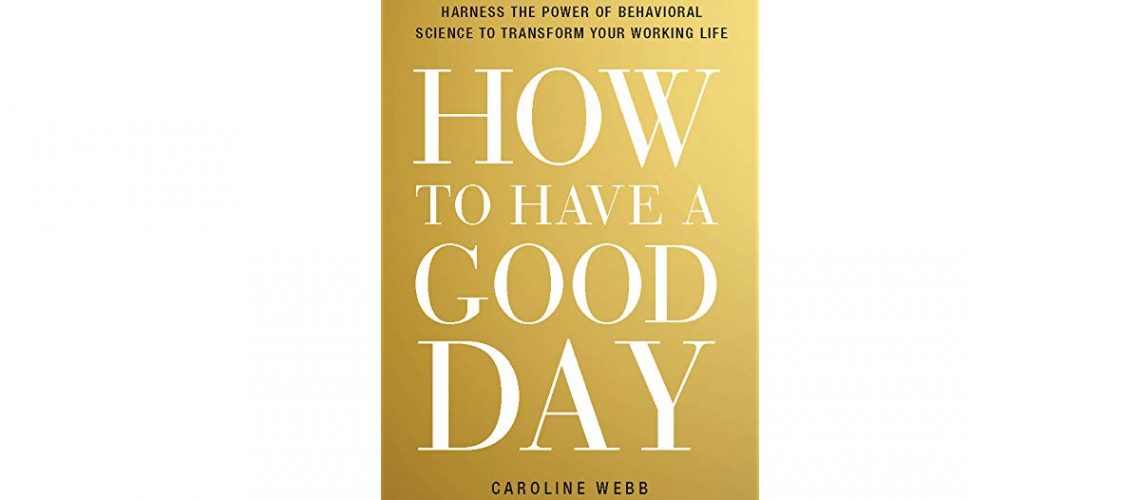Harness the Power of Behavioral Science to Transform Your Life
Advances in behavioral sciences are giving us a better understanding of how our brains work, why we make the choices we do, and what it takes for us to be at our best.
How To Have A Good Day: Animated Summary
ProductivityGame
Key Takeaways
How to be most effective throughout the day? We are always either in a defensive mode or a discovery mode. We switch between the discovery mode where we have clarity and seeking opportunities to advance our goals over to the defensive mode, where we are living in reaction to other people’s demands.
We have a choice, we can let events and circumstances dictate our day or we can become more proactive and intentional.
As soon as a situation feels outside of our control, our brain and adrenal glands push much higher levels of adrenaline and noradrenaline into our system and this flood of chemicals turns our state of readiness into something edgier. This edgy state can feel exciting at first, but it quickly erodes our thinking and our decisions, ultimately our day.
1. Waking Time
“We miss a big opportunity if we simply let the day happen to us.”
The brain is always filtering through large amounts of information and giving us a very subjective reality. Think of your mind as having a huge spam filter like your email. The majority of information that comes our way gets put in the spam filter where we are left with a limited amount of information in our inbox that makes up our reality.
“The things that get through the filters are strongly influenced by the priorities and assumptions we take into the day.”
With a few minutes of mental preparation involving a quick set and recheck of those priorities and assumptions, we can shift the way we experience the day making it more productive and more enjoyable.
3 Part System for Setting Intentions
1. AIM Aim to discover the most important activities of the day. Make a list of the actions you wish to take, the people you expect to meet and the work you want to do. What really matters most for making the day successful? Find one or two clear outcomes that those activities lead to. Take these outcomes and schedule an uninterrupted block of time during the day.
A group of researchers at Harvard Business School evaluated the daily work patterns of over 9,000 people and found that the likelihood of creative thinking was actually higher when people were able to focus on one task for a period of uninterrupted time. People who had fragmented days severely limited their creative thinking.
- A study from Microsoft found that when their employees were interrupted by an email it took them an average 15 minutes to fully regain their train of thought.
Almost all of your big outcomes will require a bit of creativity to get to an innovative solution or to find a way to get things done faster. Schedule a time of the day to turn off all notifications, activate autoresponders and put signs up to let people know that this your time to focus and make meaningful progress.
2. ATTITUDE most people approach their day with rose-colored glasses. Webb suggests we use a tool called “mental contrasting” to adjust our attitude and increase the odds having a successful day.
“People are far more likely to achieve their goals if they think hard about both their outcome they want and the obstacles they’re facing, and plan for both.”
When-Then Plan when working on an important task and you get interrupted by someone who has an urgent request of you and that request is less important than what you’re currently working on then you’re going to respond with a positive note:
Acknowledge and appreciate the person’s request, highlight whatever positive priority you’re on right now and then explain to them what that means and politely decline. If possible, offer to help in a way that doesn’t distract from your priorities. (introducing them to other people that can help)
3. ATTENTION when our brains are primed with images or words, we can easily make associations with similar images or words. If we prime images or words of our goals and our intentions throughout the day, we are more likely to make associations to that goal that will help us find opportunities to advance the goal and discover creative solutions to problems that our subconscious mind is able to associate due to this priming effect.
2. Resilient Daytime
We need to practice resilience to ensure that our intentions remain intact. Throughout the day we will inevitably be distracted and pulled away from those intentions from external circumstances. If we learn to notice these things as they happen we can stay in the driver’s seat & discovery zone.
1. Breathing become aware of your breathing. When your breathing is very shallow and quick, it the first signs that you are going into defensive mode. Webb states that countless studies suggest that when we make our breathing more relaxed, deeper, slower and taking in plenty of air each time, our body seems to take it as a signal that the threat has passed. Stress hormone levels drop, restoring an ability to think more constructively. Aim for 90 seconds of deep breathing to get out of the defensive mode.
2. Obligations when this happens, we tend to revert back into defensive mode. It is our duty throughout the day to be able to reframe and reinterpret the requests and things that come our way in terms of our intrinsic goals and serving us. Ask two questions:
- 1. “What bigger aspiration or value of mine does this task speak to?”
- 2. “How does this request support something that matters to me?”
“Requests from other people activate brain areas strongly associated with self-control & self-discipline; by contrast, goals we set for ourselves and engage areas associated with our desires and needs.”
3. People’s Actions we naturally tend to think when we do something wrong, it’s the circumstances, but when we see other people do something wrong, there’s something wrong with them as a person. Always give people the benefit of the doubt. When dealing with the behavior of others, think that they could simply be tired, hungry, or dealing with a lot right now?
3. End Your Day on A Good Note
1. Peak-End Rule psychologist have found for any given experience we typically only remember the peak of the experience and how we ended it. End it on a high-note, the things we are grateful for, visualize the things that went right.
We can capsulate the whole day as being an overall positive experience even if it was filled with struggle. This will give us the confidence the following day to continue to build momentum on our goals and continue to have good days because you know you’re going to end on a good note.
At the end of the day practice gratitude and relive the positive experiences of the day to stay resilient and motivated for tomorrow.
How we spend our days is, of course, how we spend our lives.


